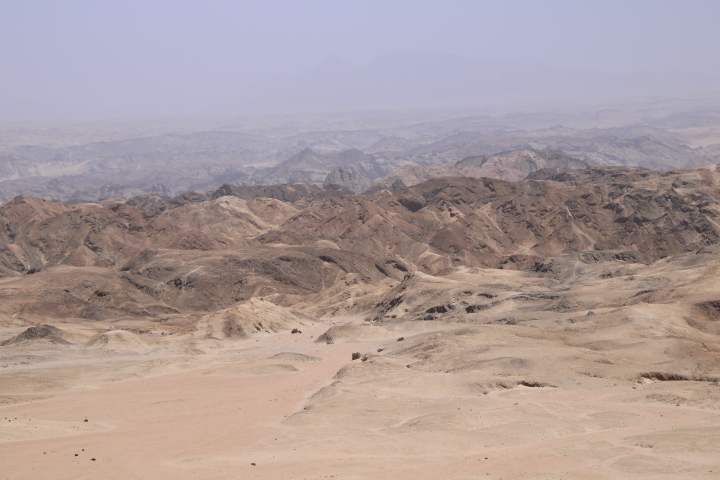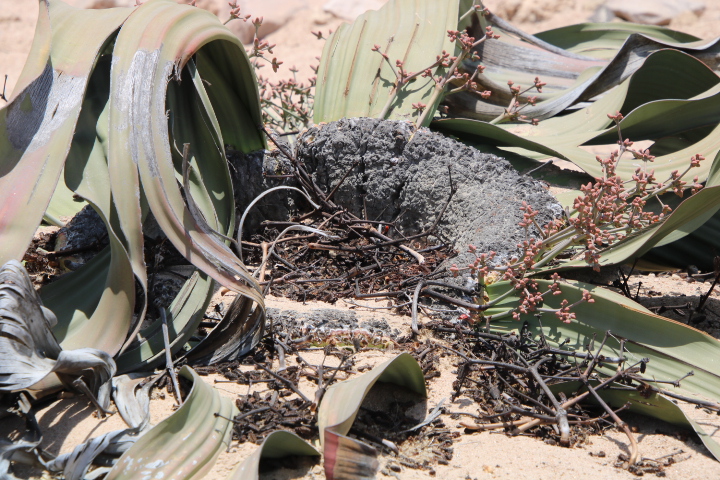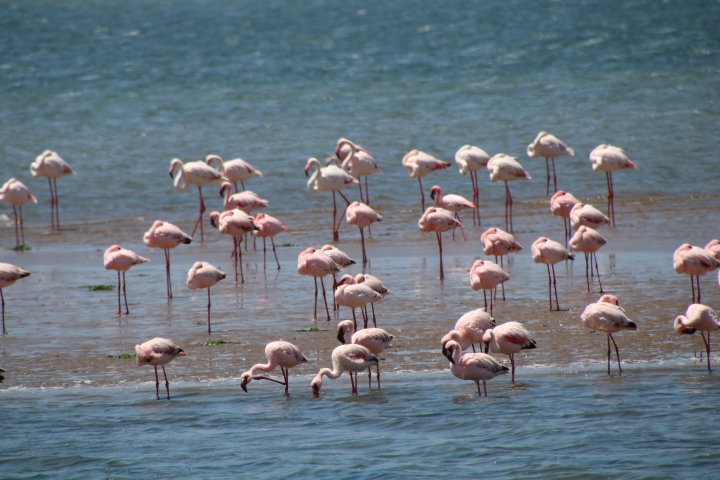At the opening of the curtains at 07:30 we were approaching Pelican Point on the sand spit that provided the original safe anchorage at Walvis Bay. We are at 22S 14E and will dock in about an hour.


Many ships are at anchor, waiting on the tide and spaces in the port which handles Namibia’s trade as well as that for landlocked countries, such as Botswana, who originally had to rely upon rail routes to ports in South Africa.


It was very bumpy overnight, especially when we arrived off the Skeleton Coast where the seawater currents from Antarctica and the Atlantic meet. Here shipwrecks litter the coast as many were blown too close to land and floundered where the Namib Desert meets the ocean. Each day, morning and evening mists, provide sufficient moisture for small plants and insects to survive. Away from the ocean, however, the Namib is a hot, barren desert.
We visited Dune 7 (because it is 7 miles from town) and it is described as the largest in the region. That may only be for the tour buses, which keeps them out of remote places, where the dunes are bigger and extend further.



Later we called in at the Namib-naukluft National Park with its so-called moon landscape, though it actually looks like parts of Death Valley, USA.



Earlier this week we discussed how the desert was formed from the volcanic activity and how the surface was covered with burnt basalt. We found that. Additionally, we found salt deposits which are slowly increasing in size because of the water from the mists and how small pieces of rock are trapped in this. Showing no fear, we came across tractrac chat birds, who virtually stood on your shoe, but survive with so little in this parched landscape. They are members of the flycatcher family




We stopped when passing Welwitschia plants which resemble, some say, wilted lettuce but with bigger leaves. In fact, there are only two leaves in a lifetime of up to 500 years or more. These plants were here many thousands of years ago before the early peoples of the region.



Finally, we called at The Lagoon, formed by the spit, home to flamingos. It is one of three wetlands that form South Africa’s most important site for resident and migratory birds. We were lucky to see two species of flamingo – the lesser and the greater. They flock in large numbers here and are easily identified by their colour. The lesser flamingo is pink because it filters algae and diatoms from the water, whilst the greater flamingo is white, with a hint of pink, because it digests small molluscs and crustaceans as well as organic matter from the mud.




We departed Walvis Bay just after 6:00 p.m. and as we write at 21:05, we have 694 miles to go to reach Cape Town and are just short of the Tropic of Capricorn.